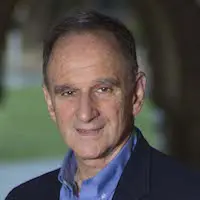Martin E. Hellman
Professor Emeritus of Electrical Engineering at Stanford University, Ph.D. - Stanford
Recommended book categories
Professor E. has recommended books in the following areas:
From 1968 to 1969 he worked at IBM’s Thomas J. Watson Research Center in Yorktown Heights, New York, where he encountered Horst Feistel. From 1969 to 1971, he was an assistant professor of electrical engineering at the Massachusetts Institute of Technology. He joined Stanford University electrical engineering department in 1971 as an assistant professor and served on the full-time faculty for twenty-five years before taking emeritus status as a full professor in 1996.
Hellman and Whitfield Diffie’s paper New Directions in Cryptography was published in 1976. It introduced a radically new method of distributing cryptographic keys, which went far toward solving one of the fundamental problems of cryptography, key distribution. It has become known as Diffie–Hellman key exchange, although Hellman has argued that it ought to be called Diffie-Hellman-Merkle key exchange because of Merkle’s separate contribution. The article stimulated the development of a new class of encryption algorithms, known variously as public key encryption and asymmetric encryption. Hellman and Diffie were awarded the Marconi Fellowship and accompanying prize in 2000 for work on public-key cryptography and for helping make cryptography a legitimate area of academic research, and they were awarded the 2015 Turing Award for the same work.
Hellman has been a longtime contributor to the computer privacy debate. He and Diffie were the most prominent critics of the short key size of the Data Encryption Standard (DES) in 1975. An audio recording survives of their review of DES at Stanford in 1976 with Dennis Branstad of NBS and representatives of the National Security Agency. Their concern was well-founded: subsequent history has shown not only that NSA actively intervened with IBM and NBS to shorten the key size, but also that the short key size enabled exactly the kind of massively parallel key crackers that Hellman and Diffie sketched out. In response to RSA Security’s DES Challenges starting in 1997, brute force crackers were built that could break DES, making it clear that DES was insecure and obsolete. In 2012, a $10,000 commercially available machine can recover a DES key in days.
Hellman also served (1994–96) on the National Research Council’s Committee to Study National Cryptographic Policy, whose main recommendations have since been implemented.
Here is a list of some of Professor Hellman’s major awards:
-
1981: IEEE Donald G. Fink Prize Paper Award (together with Whitfield Diffie)
-
1997: he was awarded The Franklin Institute’s Louis E. Levy Medal
-
1998: Hellman was a Golden Jubilee Award for Technological Innovation from the IEEE Information Theory Society
-
2000: he won the Marconi Prize for his invention of public-key cryptography to protect privacy on the Internet, also together with Whit Diffie
-
2010: he wone the IEEE Richard W. Hamming Medal
-
2011: he was inducted into the National Inventors Hall of Fame.
-
2011: he was made a Fellow of the Computer History Museum for his work, with Whitfield Diffie and Ralph Merkle, on public key cryptography
-
2015: he won the Turing Award together with Whitfield Diffie. The Turing award is widely considered the most prestigious award in the field of computer science. The citation for the award was: “For fundamental contributions to modern cryptography. Diffie and Hellman’s groundbreaking 1976 paper, “New Directions in Cryptography,” introduced the ideas of public-key cryptography and digital signatures, which are the foundation for most regularly-used security protocols on the internet today.”
